
The National Association of Colored Women's Clubs (NACWC) is an American organization that was formed in July 1896 at the First Annual Convention of the National Federation of Afro-American Women in Washington, D.C., United States, by a merger of the National Federation of African-American Women, the Woman's Era Club of Boston, and the Colored Women's League of Washington, DC, at the call of Josephine St. Pierre Ruffin. From 1896 to 1904 it was known as the National Association of Colored Women (NACW). It adopted the motto "Lifting as we climb", to demonstrate to "an ignorant and suspicious world that our aims and interests are identical with those of all good aspiring women." When incorporated in 1904, NACW became known as the National Association of Colored Women's Clubs (NACWC).
The National Federation of Music Clubs (NFMC) is an American non-profit philanthropic music organization that promotes American music, performers, and composers. NFMC endeavors to strengthen quality music education by supporting "high standards of musical creativity and performance." NFMC headquarters are located in Greenwood, Indiana.
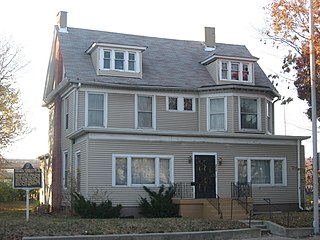
Indiana State Federation of Colored Women's Clubs, also known as the Minor House, is a historic National Association of Colored Women's Clubs clubhouse in Indianapolis, Indiana. The two-and-one-half-story "T"-plan building was originally constructed in 1897 as a private dwelling for John and Sarah Minor; however, since 1927 it has served as the headquarters of the Indiana State Federation of Colored Women's Clubs, a nonprofit group of African American women. The Indiana federation was formally organized on April 27, 1904, in Indianapolis and incorporated in 1927. The group's Colonial Revival style frame building sits on a brick foundation and has a gable roof with hipped dormers. It was listed on the National Register of Historic Places in 1987.
The Texas Association of Women's Clubs (TAWC) is an umbrella organization of African American women's clubs in Texas. It was first organized as the Texas Federation of Colored Women's Clubs in 1905. The purpose of the group was to allow clubs to work together to improve the social and moral life of people in Texas. The club also spoke on topics of interest to black women in the United States.

The South Carolina Federation of Colored Women's Clubs (SCFCWC) was an African American women's club founded in 1909 in South Carolina. The umbrella organization was created by Marion Birnie Wilkinson, Sara B. Henderson, Lizella A. Jenkins Moorer, Celia Dial Saxon and other women who met at Sydney Park Church in Columbia. They adopted the motto of the National Association of Colored Women's Clubs (NACWC), "Lifting as We Climb." Wilkinson became the first president and worked towards improving education and living conditions for black people in South Carolina. The organization grew to have twenty-five hundred members in 1922. One of the major accomplishments of the SCFCWC was the creation of the Wilkinson Home for Colored Girls in Cayce. The home was originally for girls who had been deemed "delinquent" and later housed orphans.
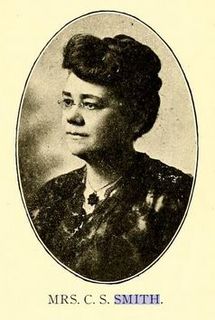
Christine Shoecraft Smith was an African-American community worker began her career as the assistant principal of the Alabama State Normal and Industrial School. She married an AME minister, who would become a bishop in the church and assisted him as the manager of the press organ of the Sunday School Union. She worked in many clubs and served as the 13th president of the National Association of Colored Women's Clubs (NACWC).

Roberta Johnson Dunbar was an American clubwoman and peace activist based in Rhode Island. Her first name is sometimes written "Reberta" in sources.
The Woman's Era Club was an African-American women's civic organization founded in Boston, Massachusetts, in between 1892 and 1894 by Josephine St. Pierre Ruffin. The Club was the first black women's club in Boston. The organization was especially well-known for the conflict caused when Ruffin attempted to desegregate the General Federation of Women's Clubs (GFWC) in 1900.
The Empire State Federation of Women's Clubs (ESFWC) was founded in 1908 and is an umbrella organization for African-American women's groups in New York. The organization worked to help improve the lives of young women and helped care for Harriet Tubman until her death in 1913. The organization was affiliated with the National Association of Colored Women's Clubs, and worked with the NAACP.
Ada Belle Dement was an American educator and clubwoman. In 1941, she became president of the National Association of Colored Women's Clubs (NACWC).

The Iowa Federation of Colored Women's Clubs (IFCWC) was an umbrella organization serving African-American women's clubs in Iowa. The motto of IFCWC was "Sowing Seeds of Kindness", and the organization was affiliated with the National Association of Colored Women. The club produced a journal called the Iowa Colored Woman. IFCWC sent delegates to represent the state at national conventions and opportunities such as "Colored Women's day" at the 1939 New York World's Fair. The IFCWC is also known for creating a black women's dormitory for the University of Iowa before the school was fully integrated. The building has been listed on the National Register of Historic Places.
Alice W. Wiley Seay was an American social worker and founder of the Empire State Federation of Women's Clubs. She was also involved in charity work through the Dorcas Society and women's clubs. She held leadership roles in many of these organizations.
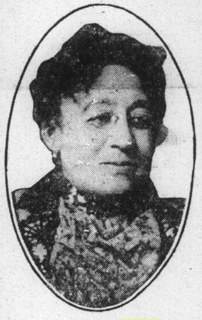
M. Cravath Simpson was an African-American activist and public speaker. After beginning her career as a singer, she studied to become a podiatrist, but is most known for her work to uplift the black community and combat lynching. Though she was based in Boston, Simpson spoke throughout the Northeastern and Midwestern United States urging recognition of the human rights of black citizens.

Emma S. Connor Ransom was an American educator and clubwoman, active in the African Methodist Episcopal Church (AME) and the YWCA.
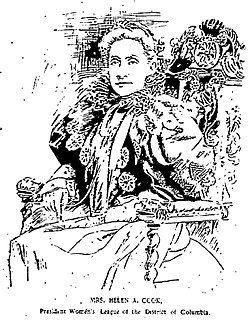
Helen Appo Cook was a wealthy, prominent African-American community activist in Washington, D.C. and a leader in the women's club movement. Cook was a founder and president of the Colored Women's League, which consolidated with another organization in 1896 to become the National Association of Colored Women (NACW), an organization still active in the 21st century. Cook supported voting rights and was a member of the Niagara Movement, which opposed racial segregation and African American disenfranchisement. In 1898, Cook publicly rebuked Susan B. Anthony, president of the National Woman's Suffrage Association, and requested she support universal suffrage following Anthony's speech at a U.S. Congress House Committee on Judiciary hearing.
Oregon women achieved the vote in 1912 and throughout the state women in organizations organized around racial groups and ethnicities. Portland had a significant number of African American women’s clubs and organizations, including the Oregon Federation of Colored Women's Clubs.
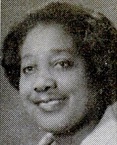
Mamie Bynes Reese was an American clubwoman, college professor, and Georgia state official.
Mary H. Dickerson was an African American businesswoman and clubwoman. Dickerson founded several women's groups in the New England area and in Newport, Rhode Island. Her dress shop catered to prominent clients in Newport and she was the first Black woman to open a shop on her block on Bellevue Avenue.
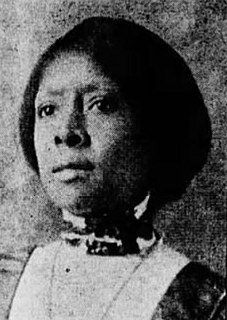
Maude Brockway was an American teacher, milliner, and activist. She was born in Arkansas in 1876 and moved to Indian Territory after completing her education at Arkansas Baptist College. Initially, she worked as a teacher around Ardmore, Chickasaw Nation and then opened a hat-making business. In 1910, she moved to Oklahoma City and became involved in the Black Clubwomen's Movement. She was one of the founders of the state affiliate, Oklahoma Federation of Colored Women's Clubs and city chapter, Oklahoma City Federation of Colored Women's Clubs of the National Association of Colored Women's Clubs. She served as president of the city chapter from 1925 to 1950 and of the state federation from 1936 to 1940, as well as holding offices in the national organization.











